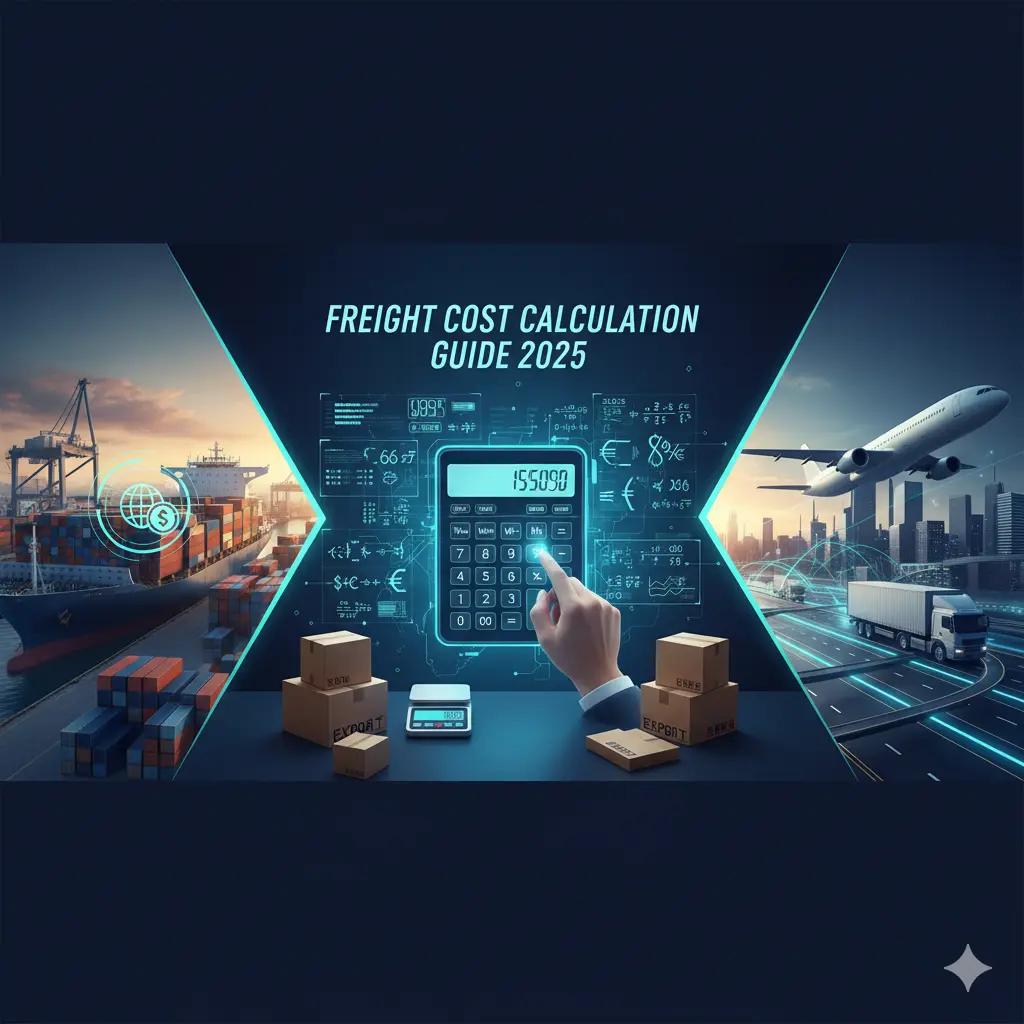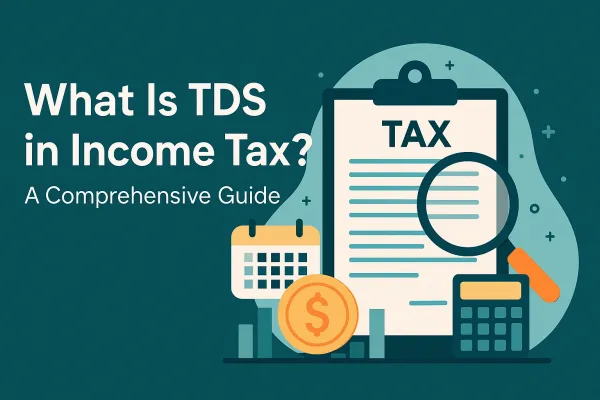Complete Freight Cost Calculation Guide 2025: Master Air, Sea, and Road Shipping

For businesses engaged in trade, logistics managers, and even individual consumers shipping large items, understanding freight cost calculation is the difference between a profitable transaction and a financial headache.
In the dynamic world of 2025, freight cost is more volatile and complex than ever, driven by global events, new environmental regulations, and fluctuating fuel prices. The simple question, “What is freight cost?” no longer has a simple answer. It involves intricate formulas for volume, weight, and a host of surcharges that can surprise the unprepared.
This complete freight cost calculation guide 2025 is designed to demystify the process. We will break down how to calculate freight cost for air, sea, and road transport, providing you with the formulas, examples, and expert tips needed to accurately predict—and reduce—your shipping expenses.
Understanding the Freight Cost Landscape in 2025
The year 2025 presents unique challenges for shipping:
- Geopolitical Volatility: Disruptions in key waterways (like the Red Sea) force longer routes, increasing fuel consumption and transit times, which directly translate to higher shipping costs.
- Sustainability Mandates: New environmental regulations, such as those from the International Maritime Organization (IMO) on carbon emissions, are adding "green surcharges" to ocean freight rates as carriers invest in cleaner fuels and technology.
- Capacity vs. Demand: While new capacity (more ships) is entering the market, sudden surges in demand—often driven by eased tariffs or economic shifts—can lead to container shortages and sharp rate hikes, especially during peak seasons.
The key to navigating this environment is realizing that freight cost is never just a flat rate. It is a formula, and understanding that formula is your first step to savings.
✈️ Air Freight Calculation: The Volumetric Weight Rule
When it comes to air freight, you're not just paying for the weight—you're also paying for the space your cargo takes up on the aircraft. That's why airlines use a method called Volumetric Weight (also known as Dimensional Weight or DIM weight).
The core principle is simple: The airline charges you based on the higher of the two weights.
Chargeable Weight = Higher of (Actual Weight OR Volumetric Weight)
Step 1: Calculate Volumetric Weight
Volumetric Weight converts the dimensions of your cargo into a theoretical weight. The standard formula for international air freight is based on the industry-accepted volumetric factor of 6000 cm3 per kg.
Volumetric Weight (in kg)=6000Length (cm)×Width (cm)×Height (cm)
Example Calculation: Your cargo measures:
- Length: 140 cm
- Width: 100 cm
- Height: 90 cm
- Actual Weight: 150 kg
Volumetric Weight=6000140×100×90=210 kg
Result: Since the Volumetric Weight (210 kg) is higher than the Actual Weight (150 kg), you will be charged for 210 kg.
Special Consideration: Non-Stackable Cargo
If your shipment can't be stacked (due to its shape, fragility, or packaging), it effectively renders the space above it unusable by the airline. This means:
- Higher Divisors: Some airlines may apply a higher volumetric divisor (like 5000 instead of 6000) for non-stackable or fragile cargo.
- More Cost: This higher divisor results in a higher volumetric weight, meaning more cost—even if the actual weight doesn't change.
💡 Pro Tip: Always inform your freight forwarder if your cargo is non-stackable to avoid unexpected charges, and invest in compact, stackable packaging to keep your volumetric weight low.
🚢 Sea Freight Calculation: CBM vs. Weight
Sea freight is the most economical mode for large international shipments, but its calculation is fundamentally different. It's like playing Tetris on a ship; you pay for whichever fills up the ship first—your cargo's size (volume) OR its weight.
The core principle for Less than Container Load (LCL) is to compare the cubic capacity of the cargo with its overall weight.
FCL vs. LCL: The Fork in the Road
- Full Container Load (FCL):
- Calculation: Simpler. The rate is a fixed, flat price for the entire container (e.g., 20 ft or 40 ft) regardless of the weight inside (within legal limits).
- Ideal for: Shipments of 15 CBM or more, or cargo that must be sealed for security.
- Less than Container Load (LCL):
- Calculation: Charged by the unit of volume or weight. The chargeable quantity is the higher of the volume (in CBM) or the mass (in tons).
- The Golden Ratio for LCL: 1 CBM=1000 kg=1 Ton
Step 2: Calculate Chargeable Volume/Weight for LCL
LCL freight is charged based on the concept of Weight or Measure (W/M), whichever is greater.
- Calculate Volume in CBM: Volume (CBM)=Length (m)×Width (m)×Height (m)
- Convert Actual Weight to Tons: Weight in Tons=1000Actual Weight (kg)
- Determine Chargeable Quantity: You pay for the BIGGER number between your Volume (CBM) and your Weight (Tons).
Example Calculation: Your cargo measures:
- Length: 2 m
- Width: 1.5 m
- Height: 1 m
- Actual Weight: 800 kg
- Rate: $80/CBM
Result: You will be charged for 3 CBM, not 0.8 tons.
Base Freight Cost=3 CBM×$80/CBM=$240
💡 Money-saving tip: If your cargo volume approaches the break-even point for a FCL (around 15-20 CBM), always get a quote for a full 20 ft container. The fixed rate is often cheaper than the accumulated LCL charges.
🚛 Road Freight Calculation: The Weight-Distance Model
Road freight (or land freight) is typically the simplest, but the calculation varies significantly depending on the region and the carrier. Road freight is mainly charged based on one of three models:
1. Weight and Distance (Most Common)
This model calculates cost based on the total weight of the cargo and the distance traveled.
Cost=Weight×Distance×Rate Factor
- Example: 500 kg cargo, 300 km distance, $0.50 per kg per 100 km. Cost=(500×300×$0.50)÷100=$750
2. Volumetric Pricing (For Bulky Cargo)
Similar to air freight, lightweight but bulky cargo is charged based on its volume. For road freight, the volumetric factor is often less punitive than air freight, commonly using 333 kg per CBM or 250 kg per CBM.
Volumetric Weight (kg)=Volume (CBM)×333
- Example: Cargo is 4 CBM and weighs 1000 kg. Volumetric Weight=4×333=1332 kg You would be charged for 1332 kg, as it is higher than the actual weight.
3. Flat Rate Zones
For frequent, common routes (e.g., city-to-city, Mumbai to Delhi), carriers may offer fixed rates per load unit (e.g., per 100 kg), simplifying the calculation.
💡 Money-saving tip: Utilize "backhaul" rates. If a truck is scheduled to return empty from a delivery city, a freight forwarder can offer a significant discount (often 30-50%) to fill that empty space. This requires flexibility in timing.
🚨 The Hidden Costs: Surcharges That Double the Bill
Understanding the base freight calculation is only half the battle. The final invoice includes Accessorial Charges and Surcharges that can easily add 30-50% to your total bill.
The #1 Rule to Save Money: Always ask your freight forwarder for the TOTAL landed cost—a breakdown of the base rate plus all-inclusive surcharges—before committing to a shipment.
🧮 Simple Calculator Cheat Sheet & Money-Saving Tips
Quick Calculation Formulas
Expert Money-Saving Tips
- Plan Ahead (Avoid Rush): Rush orders often incur a premium for faster service and guarantee of space. Planning shipments 2-4 weeks in advance can save up to 50% on air freight and secure better contract rates on sea freight.
- Optimize Packaging: For air and road freight, use smaller boxes and eliminate empty space to reduce your volumetric weight.
- Consolidate Shipments: Shipping a higher volume at once (consolidation) always attracts better per-unit rates.
- Compare Multiple Quotes: Freight quotes can vary wildly. Always compare the total, all-inclusive price from at least three different freight forwarders.
- Negotiate Incoterms: Be aware of the Incoterms (e.g., FOB, CIF) used in your sale contract. Shifting liability for shipping charges (e.g., controlling the freight from the origin) often gives you more control and better pricing.
Which Freight Method to Choose?
FAQs on Freight Cost Calculation
Q1. What is freight cost in shipping?
Freight cost is the total expense of transporting goods, including base rate + fuel, handling, and documentation charges.
Q2. How is freight cost calculated?
It depends on weight, volume, distance, and transport mode. Air uses chargeable weight, sea uses CBM/tons, and road uses weight × distance.
Q3. What is the cheapest freight method?
Sea freight is the most cost-effective for bulk shipments.
Q4. How do I calculate air freight cost?
Chargeable weight = Higher of actual weight or volumetric weight. Multiply by rate per kg and add surcharges.
Q5. What is CBM in freight?
CBM stands for Cubic Meter, used to measure cargo volume in sea freight.
Q6. What is the difference between freight and shipping cost?
Freight cost specifically refers to transporting goods, while shipping cost may include packaging, customs, and delivery.
Q7. Can freight cost be negotiated?
Yes, especially for bulk or regular shipments. Always request quotes from multiple freight forwarders.
Q8. What are hidden freight charges?
Fuel surcharge, customs clearance, documentation, port handling, and storage/demurrage are common hidden charges.
Q9. Which is better: FCL or LCL in sea freight?
FCL (full container load) is cheaper for shipments above 15 CBM, while LCL (less than container load) works for small loads.
Q10. How can small businesses save on freight costs?
By consolidating shipments, using proper packaging, avoiding rush orders, and comparing multiple freight forwarders.



